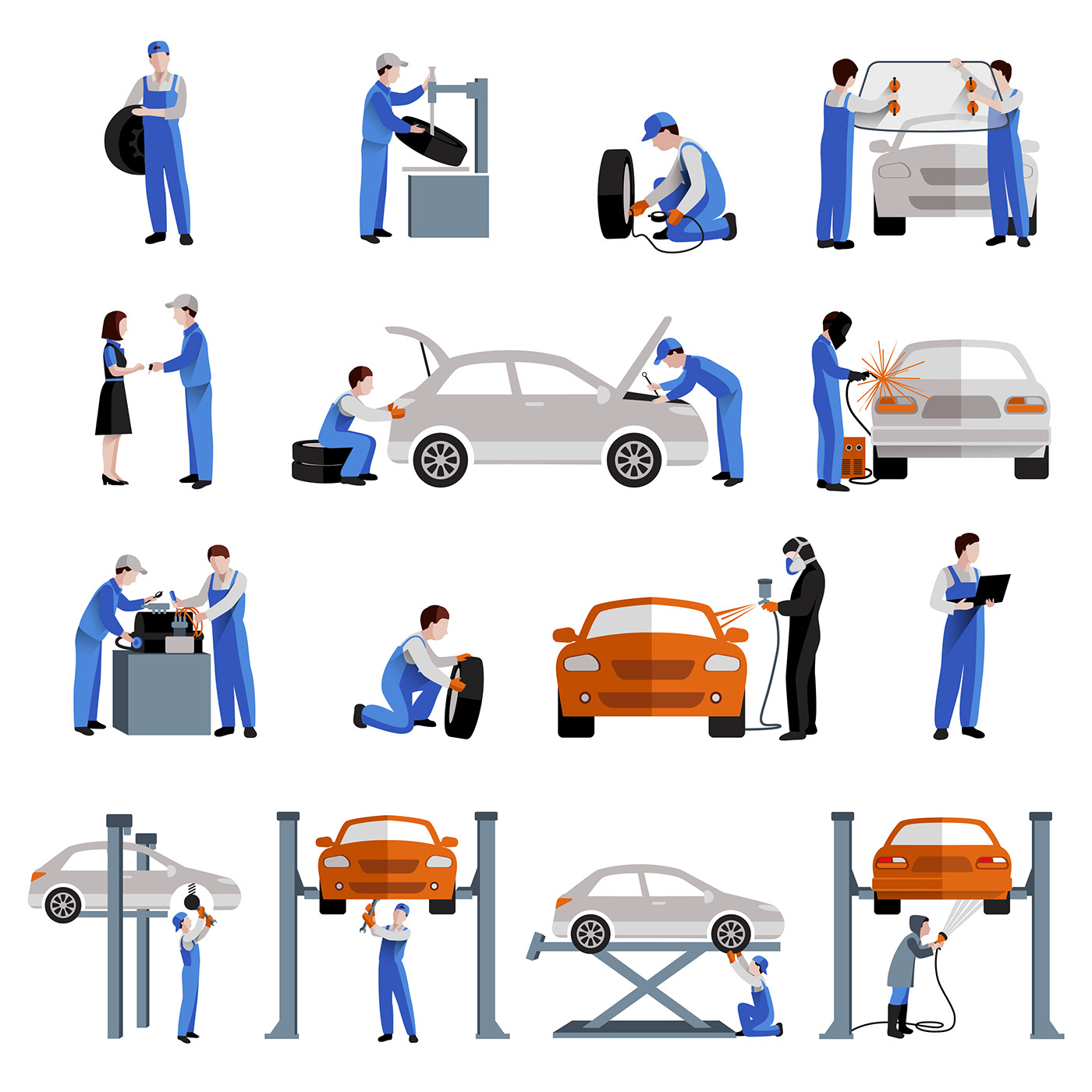
So, your car is making a strange noise, and you're wondering if you can tackle the issue without breaking the bank on a mechanic's bill. Fear not! Many car repairs are well within the reach of beginners with a bit of enthusiasm and the right tools. In this guide to car repair, we'll explore common DIY fixes that even beginners can master. No need for a degree in automotive engineering—just a willingness to roll up your sleeves and get hands-on with your vehicle.
1. Changing the Oil: Giving Your Engine a Refresh
Consider changing your car's oil as a spa day for its engine. Fresh oil keeps the engine parts running smoothly and prevents wear and tear. Here's a simplified step-by-step:
Materials Needed:
New oil
Oil filter
Oil filter wrench
Drain pan
Funnel
Procedure:
Lift the Car: Use a jack to lift your car and secure it with jack stands for safety.
Locate the Oil Drain Plug: It's usually under the engine. Place the drain pan beneath it.
Drain the Oil: Unscrew the drain plug and let the old oil drain into the pan.
Remove and Replace the Oil Filter: Use the oil filter wrench to remove the old filter. Lubricate the gasket of the new filter with oil and screw it in.
Add New Oil: Using a funnel, pour in the new oil as per your car's specifications.
Dispose of Used Oil: Many auto parts stores accept used oil for recycling. Don't dump it down the drain!
2. Replacing Air Filters: A Breath of Fresh Air for Your Engine
Just like we need fresh air, your car's engine does too. Air filters prevent dirt and debris from entering the engine, ensuring it breathes clean air. This DIY task is a breeze:
Materials Needed:
New air filter
Procedure:
Locate the Air Filter Housing: It's often in a black box near the engine.
Open the Housing: Unclip or unscrew the housing to reveal the old filter.
Remove the Old Filter: Take note of how the old filter is placed so you can put the new one in the same way.
Insert the New Filter: Make sure it fits snugly.
Close the Housing: Clip or screw the housing back into place.
3. Changing Spark Plugs: Igniting the Engine's Fire
Spark plugs are like tiny fire starters for your engine, creating the sparks needed for combustion. Over time, they can wear out, affecting performance. Let's spark some life into your car:
Materials Needed:
New spark plugs
Spark plug socket
Socket wrench
Procedure:
Locate the Spark Plugs: They're usually connected to thick wires near the engine.
Remove the Old Spark Plugs: Use the spark plug socket and wrench to unscrew and remove them.
Check the Gap: Ensure the gap on the new spark plugs matches your car's specifications.
Insert the New Spark Plugs: Hand-tighten them first, then use the socket wrench to snug them up.
Reconnect the Wires: Ensure each wire is connected to the correct spark plug.
4. Checking and Replacing Brake Pads: Stopping Safely
Brake pads are your car's superheroes, ensuring you can stop safely. Regular checks and replacements are essential for your safety. Let's brake down the process:
Materials Needed:
New brake pads
Car jack
Jack stands
Lug wrench
C-clamp
Procedure:
Lift the Car: Use the car jack and secure it with jack stands.
Remove the Wheels: Use the lug wrench to take off the wheels.
Locate the Brake Caliper: It's usually on top of the brake rotor.
Remove the Caliper: Use the lug wrench to loosen the bolts and slide off the caliper.
Replace the Brake Pads: Take out the old pads and insert the new ones.
Compress the Caliper Piston: Use a C-clamp to gently compress the caliper piston.
Reattach the Caliper: Slide the caliper back into place and tighten the bolts.
Replace the Wheels: Put the wheels back on and tighten the lug nuts.
5. Dealing with a Flat Tire: A Roadside Essential
A flat tire can happen to anyone, and knowing how to change it is a crucial skill. Let's roll up our sleeves and get that spare on:
Materials Needed:
Spare tire
Car jack
Lug wrench
Vehicle owner's manual
Procedure:
Find a Safe Spot: Pull over to a safe location away from traffic.
Use Hazard Lights: Alert other drivers by turning on your hazard lights.
Apply the Parking Brake: Ensure your car won't roll while changing the tire.
Locate the Spare Tire: Check your vehicle's manual if needed.
Use the Jack: Lift the car off the ground using the car jack.
Loosen Lug Nuts: Use the lug wrench to loosen the nuts but don't remove them yet.
Replace the Tire: Take off the flat tire and put on the spare.
Tighten Lug Nuts: Secure the spare by tightening the lug nuts.
Lower the Car: Use the jack to lower the car back to the ground.
Final Lug Nut Check: Double-check that all lug nuts are tight before hitting the road.
Conclusion: Empowering Beginners in Car Repair
Embarking on DIY car repairs as a beginner doesn't require a magic wand—just a willingness to learn and a bit of patience. These common fixes are like the ABCs of car repair, laying the foundation for understanding your vehicle and saving a few bucks along the way.
Remember, if you ever feel unsure or encounter a problem beyond your comfort zone, seeking advice from experienced car repair professionals is a wise move. With these DIY skills under your belt, you're on the road to becoming a more confident and empowered car owner. Happy wrenching!
